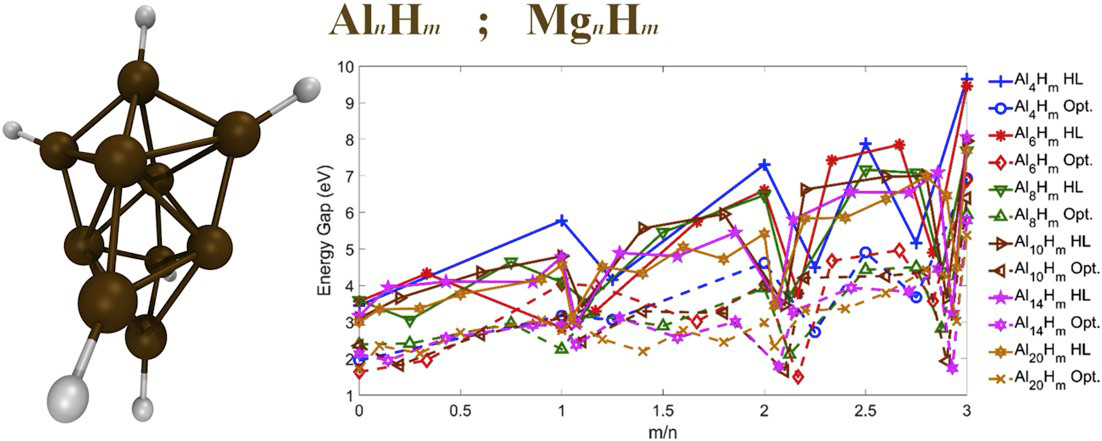DOI: 10.1016/j.matchemphys.2019.02.081
ABSTRACT
The electronic and optical properties of magnesium and aluminum hydride nanoparticles (NPs) have been examined using density functional theory (DFT) and time dependent DFT (TD-DFT). The absorption spectra (AS) of small size NPs obtained from selected functionals have been compared with high accuracy results from the equation-of-motion coupled-cluster with single and double excitations (EOM-CCSD) method. The comparison showed that the ASs from the CAM-B3LYP functional were in closer agreement with EOM-CCSD results. All calculations for NPs of larger sizes were performed using CAM-B3LYP. We show that the optical gap varies from 0.2 up to 5.5 eV for MgnHm, and from 1.0 up to 7 eV for AlnHm. The variation of the OG depends on two factors: the number of electrons in each NP (NPS with even number of electrons have higher OG), and the number of hydrogen atoms with the fully hydrogenated NPs (MgnH2n and AlnH3n) having the highest OGs. That type of NPs show promise for applications such as quantum dots, e.g. solar cells, light emitting diodes and biolabeling.


